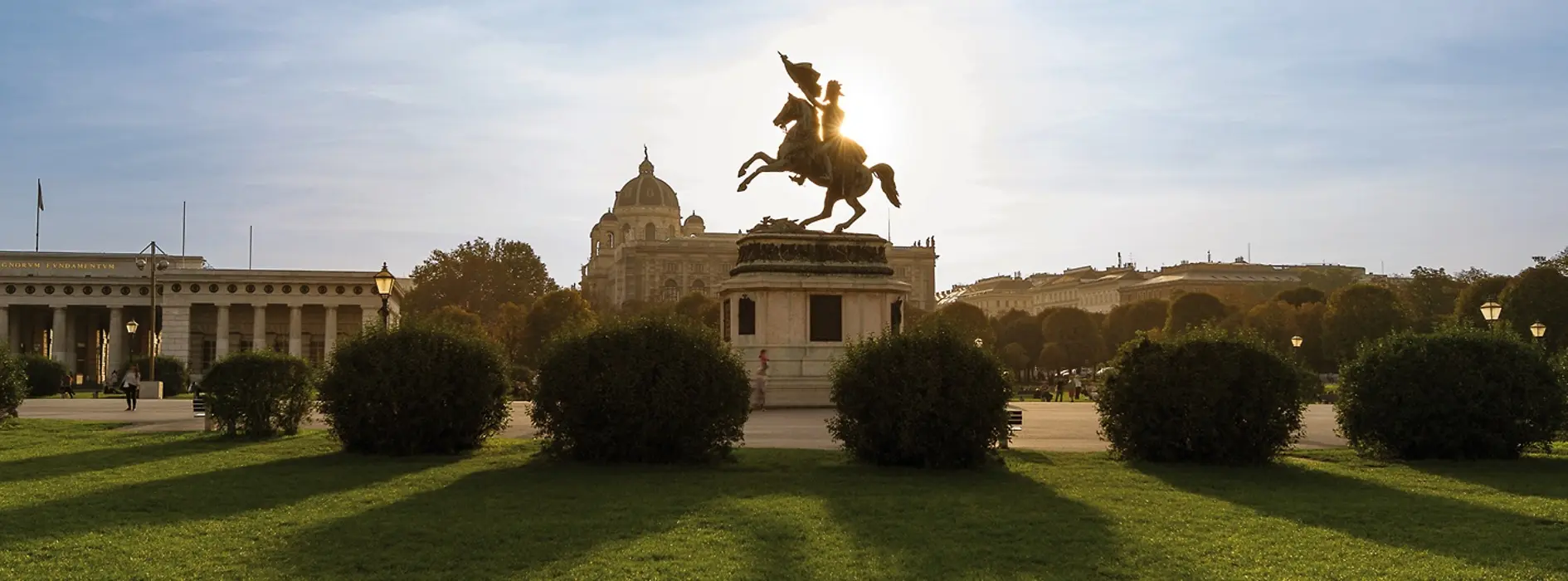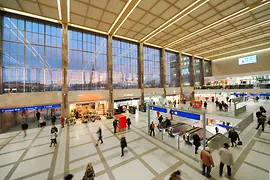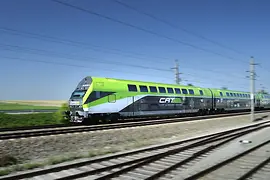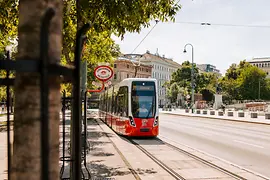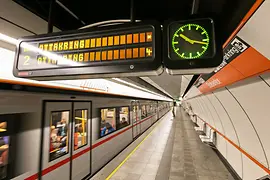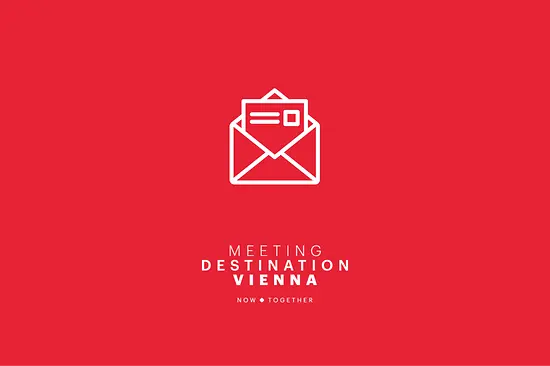To and Through Vienna – Quickly and Comfortably
No matter whether you travel to Vienna by plane or train, you'll find modern mobility hubs upon arrival in the city. The infrastructure of Vienna-Schwechat airport – located about 20 km south-east of the city center – has been gradually improved in recent years. Thanks to its location, the home airport of Austrian Airlines plays an important role in international aviation and connects Vienna directly with many European and intercontinental destinations. Vienna can be reached from all European capitals in under three hours by plane. Journeys from the airport to the city center are quick and easy by the CAT (City Airport Train), the rapid transit railway, trains, buses or taxi.
Hub in the heart of Europe
In recent years, the city has become even more efficient with the modernization of its most important train stations and the investments made in rail-based transport. Vienna's ultramodern Main Station was opened in 2014 following a construction period of five years. It is a modern landmark and international mobility hub in one. It is Vienna's main hub for local and long-distance traffic, and also the largest Nightjet hub within the European Union. ÖBB, Austria's railway company, is further expanding night train connections with its partners. Currently, eleven overnight connections run directly to Vienna. From Bregenz, Hamburg, Rome, Brussels, Amsterdam, Zurich, Basel, Venice, Milan, Berlin and even Paris, passangers can travel to Vienna while they sleep. In 2023, the year of ÖBB's 100th anniversary, a new generation of state-of-the-art Nightjet carriages will be launched. All Austrian provincial capitals can also be reached from Vienna Main Station without having to change trains. The station is also perfectly connected to the city's transport network. Two other train stations, Vienna's Westbahnhof – with its eye-catching, heritage-listed, historic station hall – and Wien Mitte station, underwent major modernizations at the beginning of the 2010s.
Smart through Vienna
Once passengers arrive in Vienna, they will find an excellent transport infrastructure. The public network extends to 1,150 kilometers. The urban transport company Wiener Linien carries visitors and residents to their destination reliably and at frequent intervals by subway, tram and bus. Vienna is a city of short distances – St. Stephen's Cathedral to the recreational paradise of Danube Island is just a quick six-minute ride. The city's three congress centers – Austria Center Vienna, Messe Wien Exhibition & Congress Center and HOFBURG Vienna – can also be quickly reached by public transport thanks to their good connections. Mobility sharing is also playing an increasingly important role: WienMobil bikesharing, carsharing, e-mopeds, and e-scooters supplement the offer. In any case, the Viennese love their "Öffis". 30% of all journeys are made by public transport, 1.1 million regular customers exceed the number of Viennese cars (725,000) significantly (both in 2021).
Vienna takes the challenges of the global climate crisis very seriously. An approach that is also reflected in its transport system. Wiener Linien, or Greener Linien, as some of the network's activities are called, implement numerous climate protection measures. The energy that subway trains and trams generate when braking is fed into the electricity grid. Electric buses have been a common sight on the city’s streets for years now and hydrogen buses are currently being tested. Apart from the ongoing modernization of the subway, tram, and bus fleets, enormous efforts continue to be made on expanding the network. Following the expansion of several lines in recent years, the redesign and extension of the U2 line and the construction of the U5 as Vienna's first fully automatic subway by 2028 are the largest and most important mobility projects in the city at the present time.
